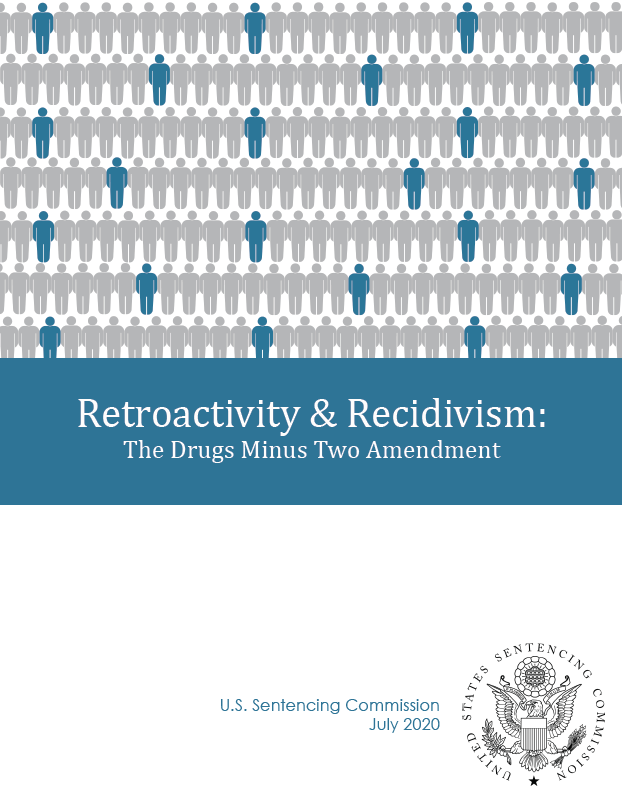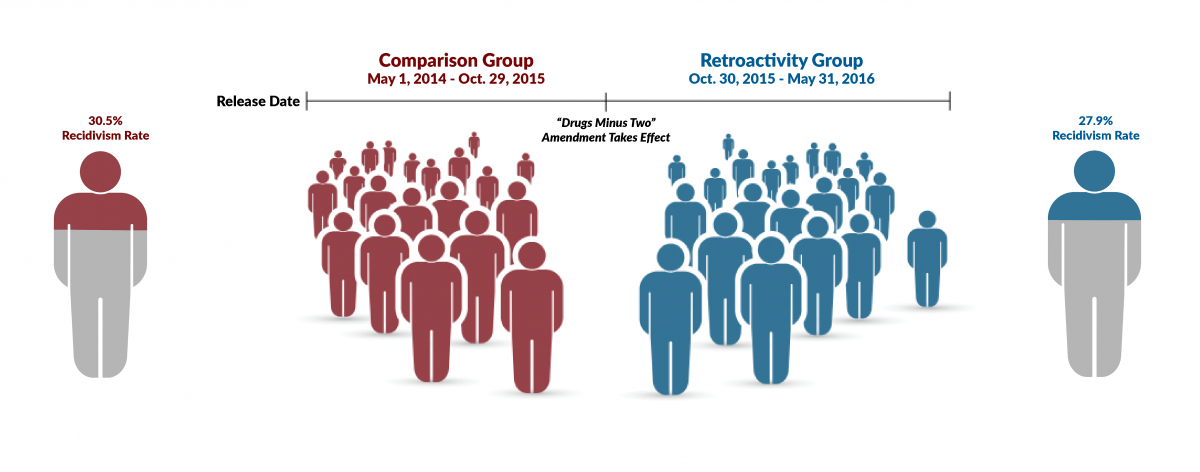Summary

The report tracked the recidivism rate of two study groups:
- Retroactivity Group: 7,121 offenders who received sentence reductions through retroactive application of the Drugs Minus Two Amendment and who were released early from October 30, 2015, to May 31, 2016.
- Comparison Group: 7,132 offenders who would have been eligible for sentence reductions through retroactive application of the Drugs Minus Two Amendment but were released between May 1, 2014, and October 29, 2015, having served their full sentences before the Drugs Minus Two Amendment could be retroactively applied.
- Other Related Reports:
Findings
The Commission's report aims to answer the research question, "Did the reduced sentences for the Retroactivity Group result in increased recidivism?" The Commission found the following:
- There was no statistically significant difference in the recidivism rates of offenders released early pursuant to retroactive application of the Drugs Minus Two Amendment and a comparable group of offenders who served their full sentences.
- This outcome may be attributed, at least in part, to the eligibility criteria required by the Commission, and the careful consideration of those criteria by judges–particularly public safety considerations–in exercising their discretion to grant or deny retroactivity motions.

